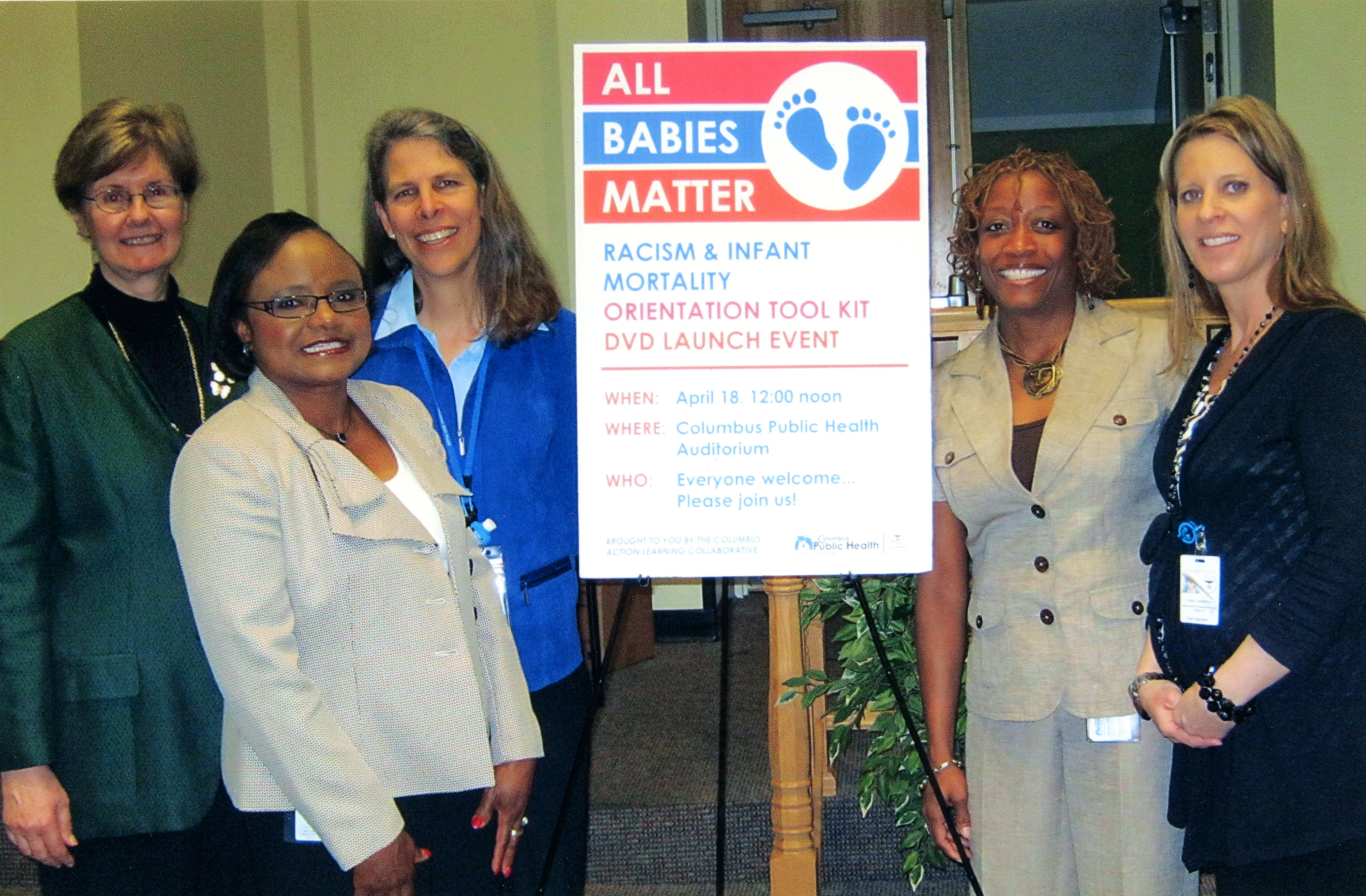Dr. Teresa Long Papers: Discover Recent History of Public Health in the Archives
The Medical Heritage Center is excited to announce that the papers of Dr. Teresa Long, the first woman to lead the Columbus Health Department, are available to researchers. Since Dr. Long donated her papers in 2017, MHC staff and student employees housed the collection in acid-free folders and boxes and described the materials in a document known as a finding aid.
Dr. Long came to Ohio from the San Francisco Department of Health where she developed guidelines for treating patients with HIV/AIDS. Dr. Long brought this experience to Columbus when she joined the Health Department in 1986 as the Medical Director and Assistant Health Commissioner. To improve the city’s response to the HIV/AIDS crisis she encouraged home health care visits and educating patients about safe sexual practices.
Mayor Michael B. Coleman appointed her Columbus Health Commissioner in 2002. Before the COVID-19 global pandemic brought public health initiatives into everyone’s day-to-day conversation, Dr. Long worked to mediate disease outbreaks that were not as widespread, but equally serious. Her papers document how Columbus responded to outbreaks of H1N1 influenza, Ebola virus, Zika virus, measles and mumps. While Dr. Long’s role typically was in planning, such as finding appropriate venues for vaccine clinics, she hit the ground in her white coat if needed. When the line for an H1N1 vaccine clinic held at the Health Department for young children in 2009 was not moving, she and a colleague began moving down the line explaining the vaccine to parents. Families could then go directly to the vaccine stations and the line moved forward.
Dr. Long and the Health Department not only responded to eruptions of particular diseases, they also collaborated with other civic, health and social organizations to address complicated problems that affect mental and physical health long term. These included, but were not limited to, access to healthcare, children’s fitness and safety, domestic violence, gun violence, infant mortality, opioid addiction and smoking cessation. Among these topics, programs to improve children’s fitness and safety, infant mortality and smoking cessation are particularly well represented in her papers. Common components of Dr. Long and her colleagues’ efforts to respond to these varied public health challenges were gathering data for planning and decision making, advocating for funding, developing public information campaigns, evaluating the effectiveness of programs, and sometimes supporting new legislation. Researchers who use the collection will find an abundance of materials illustrating these activities from flyers distributed at health fairs to outlines of Power Point presentations to reports full of statistics.
Throughout her career Dr. Long was aware of disparities in patients’ access to quality healthcare. In 1997, statistics showed that one third of Columbus residents were either uninsured or underinsured. She began the “Access for All” initiative with the critical first steps of gathering information that tells the stories behind the statistics, which includes who the uninsured and underinsured are, explanations for the situation and identifying community partners to assist. Ultimately, a problem like expanding access to health care is not solved quickly or with one solution. Dr. Long’s files contain information about multiple approaches the Health Department adopted from vaccine clinics to reaching children through public schools and opening health centers in underserved neighborhoods. Dr. Long’s sometimes expressed frustration with groups and programs that were not effective or productive.
Closely related to the issue of unequal access to health care is the tragedy of infant mortality. Columbus, unfortunately, ranked particularly high in terms of the number of babies who died prior to their first birthdays. Dr. Long told the Columbus Dispatch in 2014, "We've got a crisis. It's going to take the community to help solve it." Her papers include extensive documentation of CelebrateOne and the Greater Columbus Infant Mortality Task Force, two efforts to address infant mortality. Safe sleep campaigns reminding parents and caregivers to always place babies to sleep alone and in cribs without padding and toys were one component of combatting infant mortality, but like access to care there was not and is not a single solution.
Among unique things found in the collection is a folder labeled “Columbus Art Walks.” Dr. Long, who describes herself as an art enthusiast, sometimes found ways to combine her personal and professional interests. To encourage walking for fitness and appreciation for art in 2010 she created Art Walks. The Greater Columbus Arts Council partnered with the Health Department to provide maps on paper and online. Initially the program focused on downtown and nearby neighborhoods but evolved to become the Cbus ArtWalks App that includes historic architecture and public art across the city.
Dr. Long’s papers are useful for research because they illustrate changes in the field of public health over time. They contain files about lead in water and controlling disease-carrying pests such as bed bugs and rodents that have concerned public health workers for decades. They also include files regarding modern issues such as the city’s response plan in the event of a bioterrorism attack, legislation requiring bike helmets and whether pets should be permitted on restaurant patios.
Researchers who are interested in Dr. Long’s papers and the history of public health in Ohio may also consider using the Ohio Public Health Association Records, Spec.199822.Public Health that are also held by the Medical Heritage Center.
If you have questions about Medical Heritage Center collections or would like to view collections, please email curator Kristin Rodgers at mhcmail@osumc.edu for reference services or to schedule an appointment.

